 |
 |
 |
 |
 |
Produced
by the Population Genetics and Evolution class, Furman University |
||||
 |
 |
 |
 |
 |
Produced
by the Population Genetics and Evolution class, Furman University |
||||
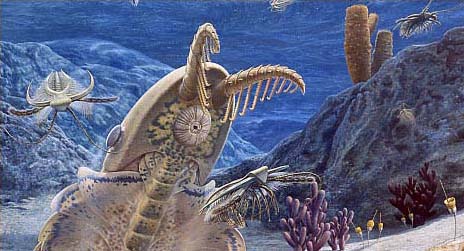 |
The
Cambrian |
 |
||
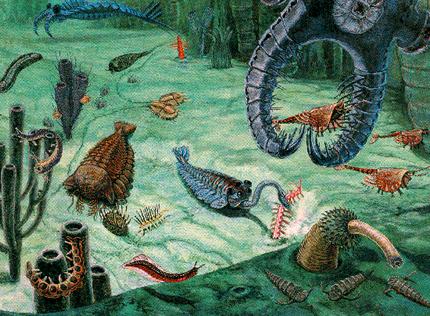 |
The Cambrian
Period is marked by the extensive radiation of many extant animal phyla.
Indeed, the rather dramatic increase in fossil abundance at this time
suggested a veritable "Cambrian Explosion" to early paleontologists.
There are representatives of several soft-bodied modern phyla, like
the annelid Canadia and the onychophoran Aysheaia.
Other fossils are more difficult to classify, like Hallucigenia
(which may be an ancestral onychophoran), Wiwaxia
(which may be an annelid or a mollusc), and Opabinia
and Anomalocaris (which may
belong to a stem taxon called "lobopods"). There are also
several species classified as primitive chordates, including Pikaia,
which resembles extant Lancelets, and Haikouichthys and Myllokunmingia
from China (which both appear to have cartilaginous skulls). The increase
in fossil abundance is no doubt due, however, to the evolutionary innovation
of exoskeletons and shells in several animal phyla--notably the arthropod
clade (represented by familiar taxa like trilobites
and less familiar taxa like Marella
and Sidneyia), reef-building sponges
like Archeocyanthans, echinoderms like
the eocrinoid Gogia, and the snail-like helcionellid molluscs.
Some molluscs may have ventured forth on land, such as Protichnites
that left tracks as trace fossils. This radiation correlates with the
rise of predators and the selective advantage that protective coverings
provided. Obviously, the evolution of hard parts would cause a significant
increase in the frequency of successful fossilization, and would be
recorded as a dramatic change in the abundance of fossils compared to
pre-cambrian strata. One of the most impressive deposits of Cambrian
fossils is the Burgess Shale Formation in
western Canada. Many of the fossils found here are found nowhere else,
and the extraordinary diversity of organisms suggests a complex community
of predators, grazers, and burrowers. |
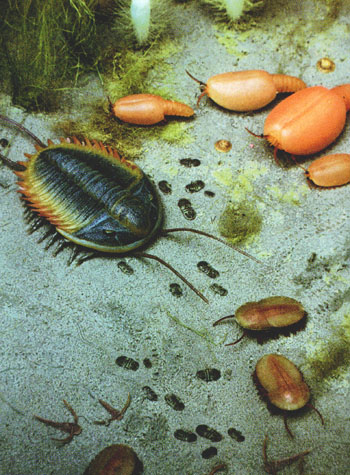 |
||
| Above: Cambrian scene from: Astrobiology Magazine; Below, Hallucigenia fossil from: The Smithsonian Institution | Above: Cambrian scene; from: Univ. of Wisconsin Below: Anomalocaris appendages, from: The Smithsonian Institution |
|||
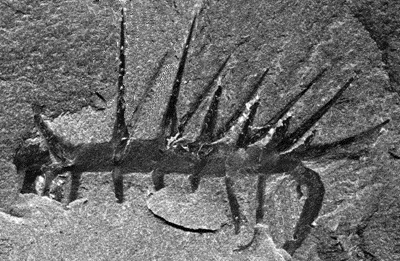 |
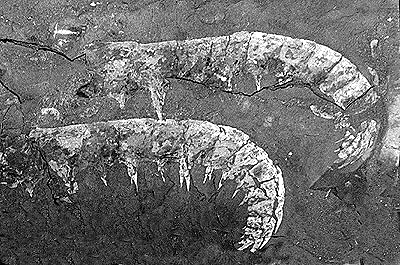 |
|||